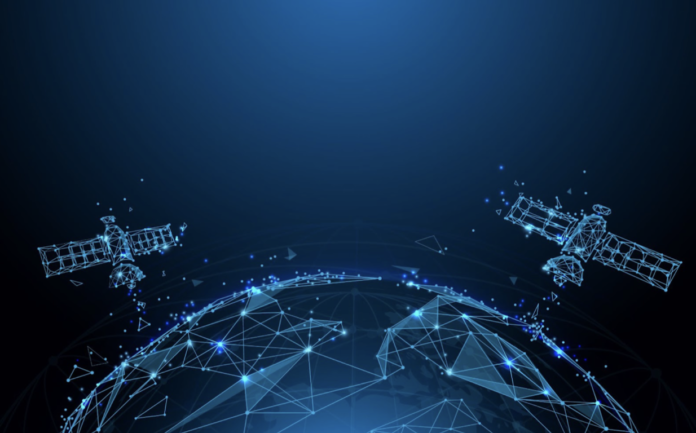Nowadays, satellite monitoring is quite widespread due to the fact that this modern way of obtaining information about the location and other types of data is considered the most convenient since it enables effective remote monitoring of vast areas. Satellite monitoring and space tech in general is used to solve a number of different issues across a variety of industries. In this piece, we will cover the main of those domains to explain how they benefit from space data and its analytics.
Agriculture
Remote agricultural monitoring provides farmers, agricultural input suppliers, and other industry players with regular access to data on the state of soil and crops. The available types of data usually differ depending on the provider of satellite imagery analytics. In general, a variety of modern farm software allow farmers to make an inventory of lands, to control crops at different stages, plan field activities effectively, and more. Among the main tasks satellite monitoring helps solve in farming are:
- Farmland inventory
- Detection of soil type, its condition, and changes
- Detection of arable and unerabale lands
- Detection of unregistered farmland
- Identification of areas affected by erosion, drought, waterlogging, etc.
- Creation of rop classification maps
- Timely detection of threats (weeds, pests, diseases)
- Smart, data-based planning of crop rotation and other activities
- Saving time and cost on production.
But growers are not the only ones who can benefit from space data in agriculture. For instance, agriculture input suppliers can also rip the benefits of satellite farm monitoring. One of the biggest advantages of satellite data for ag input suppliers is the possibility of building trust and transparency in relationships with farmers. Having access to the farmer’s data on fields, agri suppliers can analyze the market demand for a certain farm input and decide which one to produce in bigger or smaller quantities. More so, the suppliers can see how their products perform in real-life settings on various farms and under different conditions.
Therefore, input suppliers in agricultural production can use satellite imagery analytics to improve services, adjust production, and stay competitive.
Communication Services
Satellite communication networks have become a new round in the development of communications and methods of radio signal transmission. In fact, it is an evolution of terrestrial radio relay communication, the only difference being that the antenna is not on the surface of the planet, but on its orbit. Principles of satellite communications are very simple — providing an uninterrupted exchange of information between subscribers located anywhere on the planet. Signal transmission is as follows: first a radio wave arrives from the ground to a satellite, where it is amplified, cleared of interference and transmitted to the subscribers.
The key advantages of satellite communications are as follows:
- The ability to exchange information anywhere on the planet
- An ideal solution for areas without adequate infrastructure, control and coordination of aircraft, ships and ground transport
- Wide bandwidth of satellite communications allows transmitting large amounts of information practically on any distance
- High level of signal quality and its stable reception
- Secure communication due to the coding of communication channels.
Modern digital satellite communications means high-quality transmission of information over long distances regardless of the availability and capabilities of the terrestrial communication infrastructure.
Forest Monitoring
Remote sensing data (satellite imagery) is actively used in the process of forest management on any scale. Satellite imagery makes it possible to promptly identify changes in forest areas due to the influence of natural and anthropogenic factors. At present, remote sensing data is widely used to assess damage resulting from forest fires, diseases, pests, illegal logging or other factors.
Remote sensing of forests helps to accomplish the following tasks:
- Forest stands mapping
- Classification of forests by timber reserves, age, and other parameters
- Determination of degree of pests and diseases influence on the state of trees
- Monitoring of illegal logging
- Certification of forest areas
- Study of local relief for forest management activities
- Forest regeneration assessment.
Remote sensing of forests is widely used to combat illegal logging and fires. Operational monitoring of controlled areas enables objective assessment of ecological and economic damage caused by human-made or natural disasters. With the help of high-quality images, it is possible to predict the impact of adverse factors (for example, data on forest waterlogging) to carry out measures that minimize damage.
Healthcare
One of the biggest contributions of space tech into healthcare is connected to microgravity condition. Microgravity is what allows astronauts on the ISS to move smoothly. It is an interesting environment that helps in the study of human health, both in terms of understanding the effects of being in space for long periods of time on the body and in terms of treating some of the diseases that afflict people on Earth.
Cell growth is different in microgravity. Scientists can cultivate cells like endothelial cells for a little longer, which allows for learning something new about them. The other interesting phenomenon is a kind of accelerated aging process in orbit. Processes that normally take a long time on Earth (like osteoporosis development) are greatly accelerated in orbit. So the ISS is a great testing ground for research in this area.
And finally, the other thing that is incredibly interesting is the protein crystallization experiments. Whether it’s proteins related to Parkinson’s disease or drugs that a pharmaceutical company is trying to improve, protein crystals grow very nicely on the ISS. In orbit, they grow into three-dimensional ordered structures that are not confined to the two-dimensional surface of the plate. The lack of convection currents in space also allows them to grow better. This gives scientists insight into their protein structure. Researchers can take a protein associated with Parkinson’s disease and get much more information from studying it in space. This enables making important changes to the drugs’ development and mitigating the side effects due to having a new look at the structure of this protein.
Fishery
Years ago, ship captains navigated by the stars. Nowadays, spacecraft make the task much easier. Without weather, itinerary data, Internet and satellite communications, no sailor would set sail. Such familiar things have become available to people not so long ago. Now, fisheries are strongly dependent on reliable weather and climate data. Smart management and sustainability in fisheries is so important due to the fact that fisheries are among one of the top sources of protein and play a big part in many world economies, employing a huge share of the global population. Satellite monitoring enables support of sustainable fishing practices implementation thanks to the global coverage and invaluable data, which significantly enhances the monitoring of marine ecosystems.
It’s hard to overestimate the value of satellite imagery for identifying “dark vessels” — fishing ships that engage in illegal and unregulated fishing without broadcasting their location to public monitoring systems. Another value of satellite data for the fishery industry is that it enables studying of the bottom topography of the reservoir, quickly and easily finding places of fish accumulation, any obstacles, and underwater paths.
More so, satellites help detect such issues as water pollution and other environmental problems that have adverse impact on fisheries. Having a hold of the three critical factors — being aware of the marine ecosystem, finding best locations for fishing, and illegal fishing detection — leads to higher productivity, smarter management, and increased overall sustainability of the industry.
Water Mapping
Monitoring of water resources is understood as a system of continuous and comprehensive tracking of their condition, control and accounting of quantitative and qualitative characteristics in time, interdependent impact and changes in consumer properties, and a system of forecasting conservation and development in different modes of use.
The object of environmental monitoring is the assessment of its quality and level of pollution as a prerequisite for making scientifically sound decisions on the effectiveness of environmental protection measures.
Water objects are quite simply decoded from remote sensing data using information on spectral brightness of land surface objects in the near infrared range. This provides ample opportunities for the water mapping technology, inventorying small water objects and observing changes in their numbers and areas. The accuracy of borders detection depends on the spatial resolution of the images.
Space monitoring of water bodies can solve the following tasks:
- Studying coastal water dynamics (surface currents, ocean fronts, interaction of internal and surface waves, etc.)
- Studying of bioproductivity and biodiversity of coastal waters
- Identification of contamination of coastal waters from various sources
- Studying of changes in ecosystems in coastal zones of seas and oceans under the influence of natural and anthropogenic factors
- Integrated research of coastal waters condition and variability, including the anthropogenic impacts
- Studying of upwelling zones
- Monitoring of ice conditions (in northern seas)
- Determination of the bottom relief in the shelf zones and its changes under the influence of different processes
- Prevention of catastrophic natural processes in coastal areas (tsunami, underwater earthquakes, etc.) and assessment of their consequences.
Satellite monitoring and space tech provide invaluable insights to experts across different industries on Earth. The data received from these sources could not be received so easily and quickly by any other means. That is why space tech continues to develop with more and more software products designed to “broadcast” its benefits for specific purposes, depending on the area of research and implementation.





